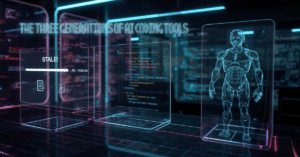
The Three Generations of AI Coding Tools, and What to Expect Through the Rest of 2025
Table of Contents
Introduction – Why AI Coding Tools Are Entering a New Era
AI coding tools have quickly moved from niche experiments to everyday essentials in the developer’s toolkit. What started as simple autocomplete suggestions is now shaping up into fully autonomous coding partners that can design, refactor, and optimize software with minimal human input. This evolution isn’t just about saving time — it’s reshaping what it means to be a developer in 2025. If you’ve seen how AI workflows like Copilot and Tabnine are transforming coding practices, you already know we’re entering uncharted territory.
But this change didn’t happen overnight. In fact, AI coding assistants can be grouped into three distinct generations:
- The first wave, focused on autocomplete and snippets.
- The second, which introduced contextual code generation.
- The third — emerging now — where AI agents act as collaborators, capable of handling entire development tasks.
Understanding these three stages isn’t just academic curiosity. For developers, it’s the difference between staying relevant and being replaced. Much like shifts in web frameworks — whether it’s debating React’s future against Svelte and Solid or exploring lightweight frontend frameworks — the rise of AI tools forces us to rethink workflows, skillsets, and career strategies.
So before we explore what lies ahead in the rest of 2025, let’s break down these three generations of AI coding tools, what defines them, and what they mean for the future of software development.
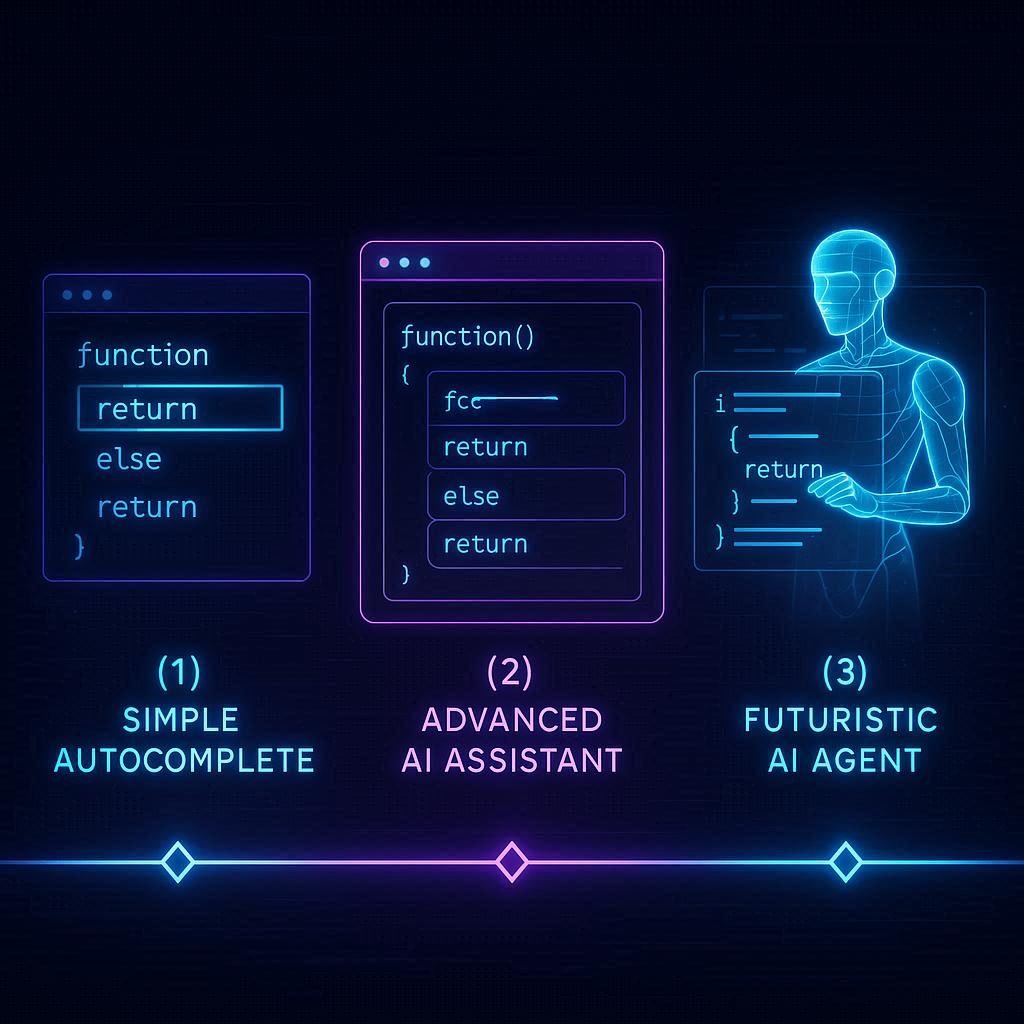
The First Generation – Autocomplete and Snippets
The first generation of AI coding tools was all about speeding up repetitive tasks. Think of it as autocomplete on steroids. Tools like early versions of IntelliSense or Kite focused on suggesting the next word, method, or variable in a line of code. These systems were not truly “intelligent” but were powerful enough to save developers time by automating boilerplate and reducing syntax errors.
This stage was important because it normalized the idea of AI in the IDE. Developers who were once skeptical about machine assistance started to appreciate the productivity boost. Typing less, reducing typos, and recalling APIs faster gave programmers the confidence to trust their tools. Much like how clean code practices shape coding discipline, these early autocomplete systems laid the foundation for AI’s deeper integration into the developer’s workflow.
However, this generation had its limitations. Autocomplete and snippet-based AI tools couldn’t understand context. If you were building a large app or switching between different frameworks, the suggestions often fell short. For example, suggesting a React component snippet in a Vue project could slow you down rather than speed things up. As more developers embraced new frontend frameworks (see: Why TypeScript Will Dominate in 2025), the demand for smarter, context-aware AI coding assistants grew stronger.
In hindsight, the first generation wasn’t about replacing developers — it was about building trust. It set the stage for the second generation of AI coding tools, where context awareness and large-scale code generation would change everything.
We have made a detailed pdf for the readers who want more knowledge, see the pdf below
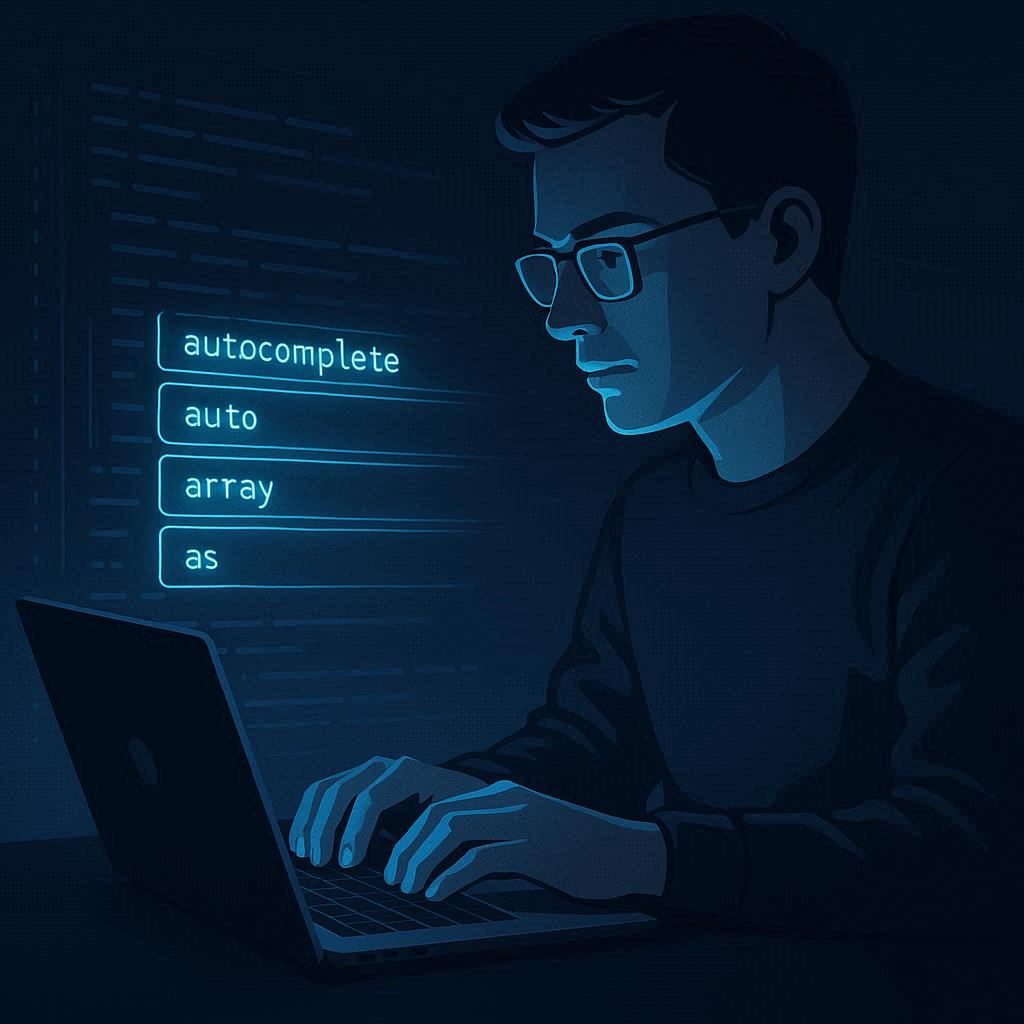
The Second Generation – Contextual AI Coding Assistants
If the first generation was about saving keystrokes, the second generation of AI coding tools was about understanding context. Instead of just suggesting the next word in a function, tools like GitHub Copilot and Tabnine began analyzing entire codebases, adapting to the architecture of your project, and even predicting your next few lines of logic. This marked a big leap forward — developers no longer had to explain everything to their tools; the tools started to “get it.”
This era was fueled by the rise of large language models (LLMs) trained on millions of repositories. These systems could not only autocomplete code but also generate entire functions or modules based on a comment. Imagine writing a comment like // fetch user data and display profile card and getting a working implementation within seconds. Suddenly, AI was doing what many thought impossible — shifting from reactive suggestions to proactive code generation.
The impact of this generation was huge for developer productivity. It blurred the line between writing and architecting software. Instead of starting from scratch, many developers leaned on AI tools for scaffolding and then refined the results. This aligns with the trend we discussed in AI Dev Workflows: Copilot, Tabnine & More, where developers increasingly act as reviewers and optimizers rather than line-by-line coders.
Yet, it wasn’t perfect. These systems could still generate insecure or buggy code — a challenge we also highlighted in How to Secure Your AI-Generated Code. Contextual AI was smarter than snippets, but it still lacked true understanding of intent. Developers often had to verify results carefully, ensuring AI didn’t produce hidden vulnerabilities or performance bottlenecks.
Still, the second generation was a game-changer. It showed that AI could move beyond syntax and truly participate in the problem-solving process — preparing the way for the third generation of autonomous coding agents.
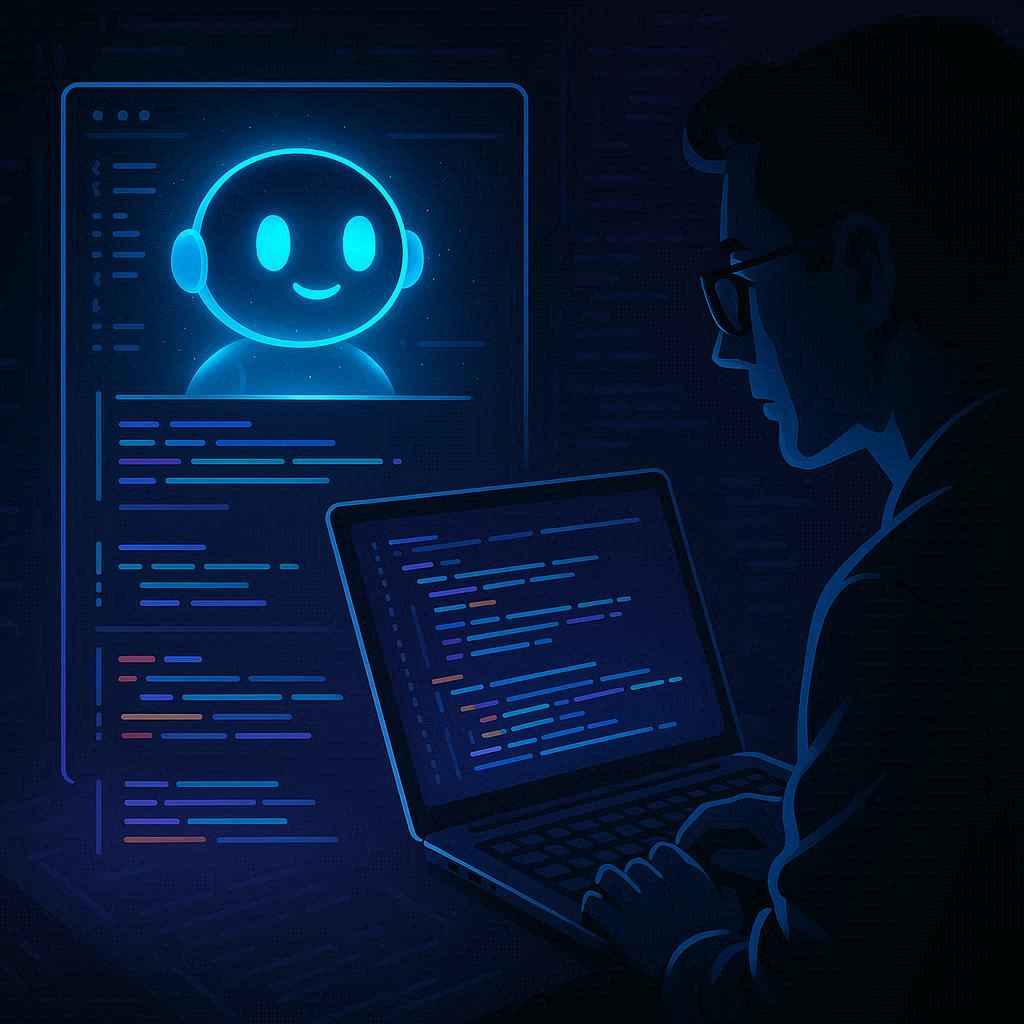
The Third Generation – Autonomous Coding Agents
If contextual AI assistants were co-pilots, the third generation of coding tools are autonomous agents. These aren’t just helpers suggesting snippets — they’re digital teammates that can plan, execute, and refine entire coding tasks with minimal human input. Instead of writing line-by-line code, developers can now describe an outcome, and AI agents break it into subtasks, fetch documentation, test their own output, and even debug errors.
The rise of autonomous coding agents has been fueled by advances in multi-agent systems and tool integration. Tools like AutoDev and emerging frameworks tie directly into your project environment, version control, and deployment pipelines. That means AI can now open issues, commit code, run tests, and push updates — almost like an extra team member working 24/7. This represents a shift from assistance to automation of workflows, echoing trends we covered in The Agent Manager Era: How Developers Will Code in 2025.
The biggest change here is not just speed, but scale. Autonomous agents can work in parallel, tackling multiple parts of a project at once — documentation, backend APIs, frontend UI tweaks — while a human developer oversees the bigger picture. This concept mirrors what’s happening in Software Development’s Third-Gen Revolution, where teams are experimenting with fully agent-driven pipelines.
Useful Links
- Software Development Life Cycle (SDLC) in 2025: Stages, Models, and Modern Practices
- The Rise of Composable Software: Why Developers Need to Think Modular in 2025
- Toil is Back: Why Even with AI, SREs Feel the Burn in 2025
- Build vs. Buy: How Developers Decide on AI Tools in 2025
- Imposter Syndrome 2.0: Competing Against AI as a Developer
- Developers vs AI-Generated Code: When Should You Trust the Machine More?
Of course, challenges remain. While these agents can write and test code, accountability and intent still rest with humans. Bugs can slip through, and without careful review, AI-driven commits could introduce security flaws — a risk we explored in Why Nearly Half of AI-Generated Code Has Security Flaws. The third generation promises autonomy, but it also demands new practices around governance, oversight, and trust in AI teammates.
What makes this stage revolutionary is the shift in the developer’s role. Instead of writing every loop or query, you’re orchestrating intelligent systems that code, test, and deploy. The developer becomes a conductor of AI agents, steering projects at a strategic level while letting automation handle the execution. This is not the future of coding — it’s already here, reshaping how modern teams build software.
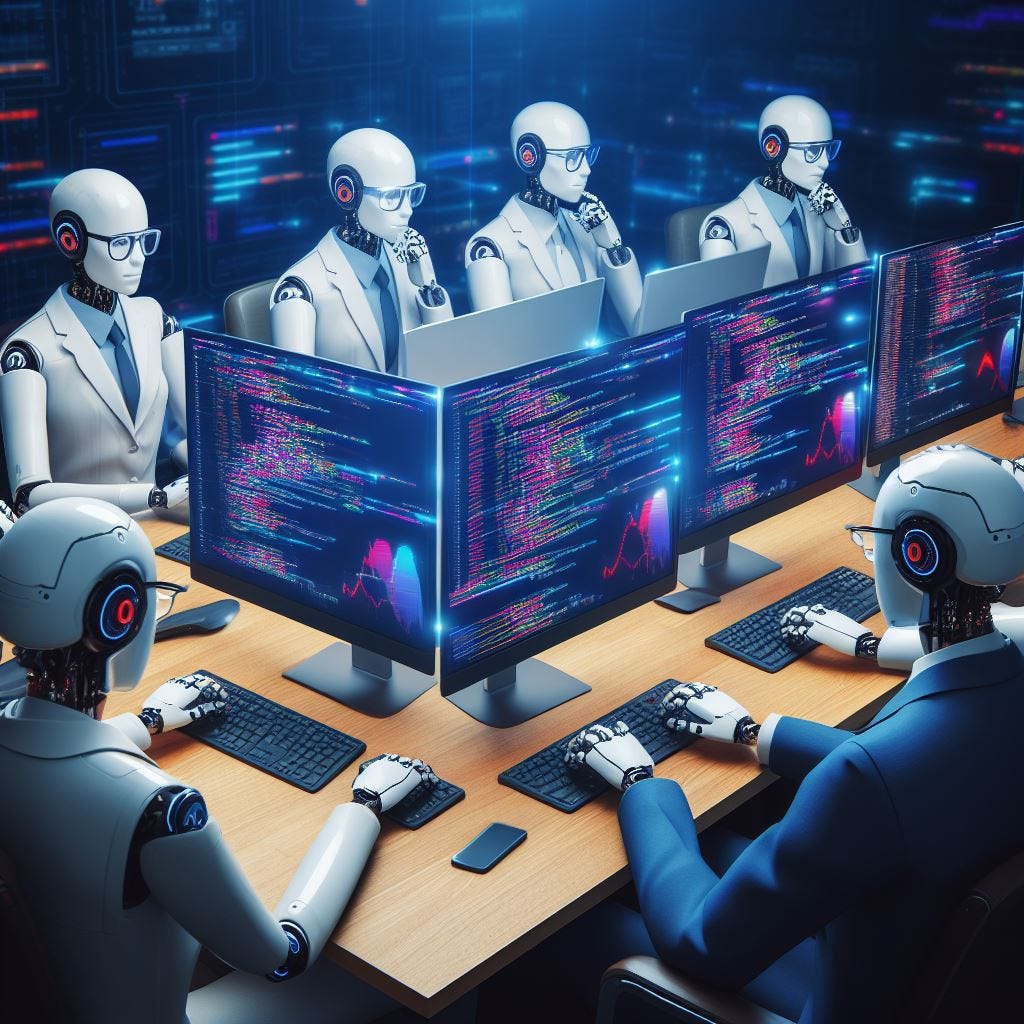
The Road Ahead – What to Expect Through the Rest of 2025
As we move deeper into 2025, the evolution of coding tools shows no signs of slowing. The next big wave will likely combine agent autonomy with domain specialization. Instead of general-purpose AI tools, we’ll see specialized agents designed for cybersecurity, database optimization, cloud deployment, and even SEO-driven development workflows. This shift mirrors what happened with the rise of AI-native tools for web designers, where niche solutions began outperforming one-size-fits-all platforms.
Another trend to watch is integration into the browser itself. With the browser increasingly acting as an IDE (as explored in Devtools as a Service), AI-powered tools won’t just run as plugins or external services — they’ll become embedded into the very environments where developers spend most of their time. Imagine debugging with frontend observability tools powered by autonomous AI that learns from real user behavior and patches issues before users even notice them.
We’ll also see greater emphasis on governance and trust in AI-generated code. With nearly half of AI-written code containing vulnerabilities (as noted in AI-Generated Code Security Flaws), companies are beginning to prioritize secure pipelines where every agent’s output is automatically scanned, tested, and logged. This will likely create a new role in tech teams — AI pipeline auditors — professionals tasked with monitoring, validating, and certifying AI-driven code contributions.
By the end of 2025, it’s not unrealistic to expect teams that look radically different from those just a few years ago. Developers won’t just be coders — they’ll be AI conductors, workflow designers, and strategy overseers. In many cases, entire product cycles could be managed with a handful of humans supported by dozens of specialized AI coding agents, working seamlessly in the background. This shift is already redefining what it means to “ship software fast”, and for developers, adapting now means staying relevant tomorrow.
Conclusion
The story of AI coding tools isn’t just about efficiency — it’s about reshaping the very definition of programming. From autocomplete helpers to fully autonomous agents, we’re witnessing a once-in-a-generation shift in how software gets built. Developers who embrace this change will find themselves not replaced, but amplified, able to produce more reliable, scalable, and secure systems at unprecedented speed.
But this transformation also comes with responsibility. As we move into an era where AI writes more of our code, the need for trust, governance, and ethical oversight grows stronger. The rest of 2025 will test whether we can balance automation with accountability — and whether developers can evolve from coders to curators of intelligent systems.
One thing is certain: the developers who thrive will be those who treat AI not as a threat, but as a partner in creation. The rest of 2025 will belong to those who master the art of working alongside intelligent coding agents, orchestrating them to achieve more than any individual coder could alone.
FAQs
1. What are the three generations of AI coding tools?
The first generation focused on autocomplete and smart suggestions, the second introduced copilots that could generate whole blocks of code, and the third is about autonomous coding agents that can plan, test, and deploy software with minimal human input.
2. Will AI coding tools replace developers?
No — while some low-level coding tasks are automated, developers are evolving into higher-level roles like workflow designers, strategists, and AI supervisors.
3. How can developers stay relevant in the AI era?
By mastering prompt engineering, learning to audit AI-generated code, and staying current with trends like AI-driven development workflows and governance models.
4. Are AI coding tools safe for enterprise use?
Yes, but caution is required. Many AI tools still generate insecure code, so implementing automated security checks — as explored in AI-generated code flaws — is essential.
5. What’s next after AI coding agents?
The next phase may involve self-learning pipelines, where AI systems continuously evolve without retraining, blurring the line between development, deployment, and maintenance.

🚀 Let's Build Something Amazing Together
Hi, I'm Abdul Rehman Khan, founder of Dev Tech Insights & Dark Tech Insights. I specialize in turning ideas into fast, scalable, and modern web solutions. From startups to enterprises, I've helped teams launch products that grow.
- ⚡ Frontend Development (HTML, CSS, JavaScript)
- 📱 MVP Development (from idea to launch)
- 📱 Mobile & Web Apps (React, Next.js, Node.js)
- 📊 Streamlit Dashboards & AI Tools
- 🔍 SEO & Web Performance Optimization
- 🛠️ Custom WordPress & Plugin Development
One comment
Leave a Reply
You must be logged in to post a comment.
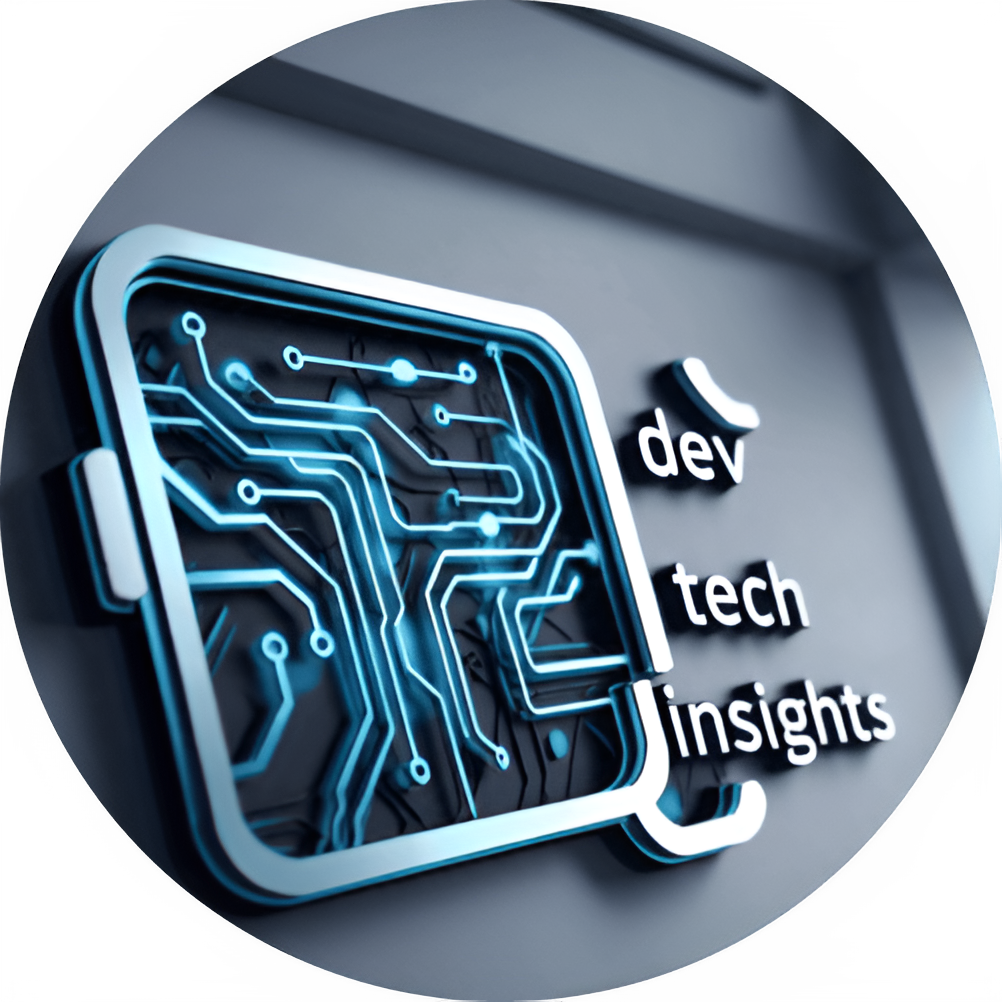
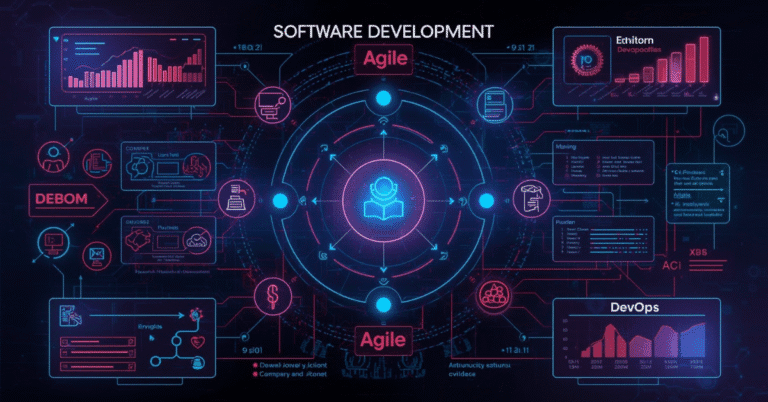






[…] AI Coding Tools: 3 Generations Shaping Development in 2025 | Dev Tech Insights […]